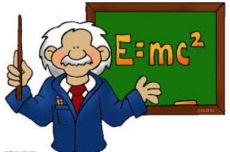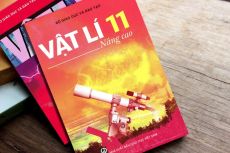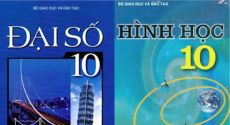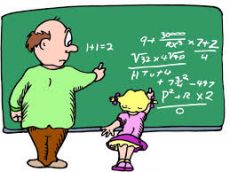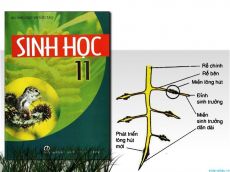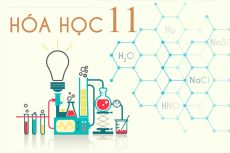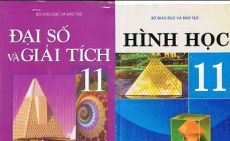Chọn câu có nghĩa gần nhất với câu đã cho: Lucy always reminds me of my youngest sister.
Suy nghĩ và trả lời câu hỏi trước khi xem đáp án
Lời giải:
Báo saiLucy luôn gợi nhớ tôi về em gái út của tôi.
A. Tên em gái út của tôi là Lucy. => sai nghĩa
B. Bất cứ khi nào tôi nhìn thấy Lucy, tôi nghĩ về em gái út của tôi.
C. Đó là Lucy, em gái út của tôi. => sai nghĩa
D. Tôi luôn nghĩ về Lucy, em gái út của tôi. => sai nghĩa
Lucy always reminds me of my youngest sister.
=> Whenever I see Lucy, I think of my youngest sister.
Câu hỏi liên quan
-
New surveys suggest that the technological tools we use to make our lives easier are killing our leisure time. We are working longer hours, taking fewer and shorter vacations (and when we do go away, we take our cell phones, PDAs, and laptops along). And, we are more stressed than ever as increased use of e-mail, voice mail, cell phones, and the Internet is destroying any idea of privacy and leisure.
Since the Industrial Revolution, people have assumed that new labor-saving devices would free them from the burdens of the workplace and give them more time to grow intellectually, creatively, and socially -exploring the arts, keeping up with current events, spending more time with friends and family, and even just ''goofing off''.
But here we are at the start of the 21st century, enjoying one of the greatest technological boom times in human history, and nothing could be further from the truth. The very tools that were supposed to liberate us have bound us to our work and study in ways that were inconceivable just a few years ago. It would seem that technology almost never does what we expect.
In 'the old days', the lines between work and leisure time were markedly clearer. People left their offices at a predictable time, were often completely disconnected from and out of touch with their jobs as they traveled to and from work, and were off-duty once they were home. That is no longer true. In today's highly competitive job market, employers demand increased productivity, expecting workers to put in longer hours and to keep in touch almost constantly via fax, cell phones, e-mail, or other communications devices. As a result, employees feel the need to check in on what is going on at the office, oven on days off. They feel pressured to work after hours just to catch up on everything they have to do. Workers work harder and longer, change their work tasks more frequently, and have more and more reasons to worry about job security.
Bosses, colleagues, family members, lovers, and friends expect instant responses to voice mail and e-mail messages. Even college students have become bound to their desks by an environment in which faculty, friends, and other members of the college community increasingly do their work online. Studies of time spent on instant messaging services would probably show staggering use.
This is not what technology was supposed to be doing for us. Now technologies, from genetic research to the Internet, offer all sorts of benefits and opportunities. But, when new tools make life more difficult and stressful rather than easier and more meaningful - and we are, as a society, barely conscious of it - then something has gone seriously awry, both with our expectations for technology and our understanding of how it should benefit us.Tho word "They" in the fourth paragraph refers to ..............
-
Ranked as the number one beverage consumed worldwide, tea takes the lead over coffee in both popularity and production with more than 5 million metric tons of tea produced annually. Although much of this tea is consumed in Asia, European and African countries, the United States drinks it fair share. According to estimates by the Tea Council of the United States, tea is enjoyed by no less than half of the U.S population on any given day. Black tea or green tea - iced, spiced, or instant - tea drinking has spurred a billion - dollar business with major tea produces in Africa and South America and throughout Asia.
Tea is made from the leaves of an evergreen plant, Camellia sinensis, which grows tall and lush in tropical regions. On tea plantation, the plant is kept trimmed to approximately four feet high, and as new buds called flush appear, they are plucked off by hand. Even in today's world of modern agricultural machinery, hand harvesting continues to be preferred method. Ideally, only the top two leaves and bud should be picked. This new growth produces the highest quality tea.
After being harvested, tea leaves are laid out on long drying racks, called withering racks, for 18 to 20 hours. During this process, the tea softens and becomes limp. Next, depending on the type of the tea being produced, the leaves may be crushed or chopped to release flavor, and then steamed to retain their green color, and the fermentation process is skipped. Producing black teas requires fermentation during which the tea leaves begin to darken. After fermentation, black tea is dried in vats to produce its rich brown or black color.
No one knows when or how tea became popular, but legend has it that tea as a beverage was discovered in 2737 B.C. by Emperor Shen Nung of China when leaves from Camellia dropped into his drinking water as it was boiling over a fire. As the story goes, Emperor Shen Nung drank the resulting liquid and proclaimed that the drink to be most nourishing and refreshing. Though this account cannot be documented, it is thought that tea drinking probably originated in China and spread to other parts of Asia, then to Europe, and ultimately to America colonies around 1650.
With about half of the caffeine content as coffee, tea is often chosen by those who want to reduce, but not necessarily eliminate their caffeine intake. Some people find that tea is less acidic than coffee and therefore easier on the stomach. Others have become interested in tea drinking since the National Cancer Institute published its findings on the antioxidant properties of tea. But whether tea is enjoyed for its perceived health benefits, its flavor, or as a social drink, teacups continue to be filled daily with the world's most popular beverage.According to the passage, which may be the reason why someone would choose to drink tea instead of coffee?
-
Aging is the process of growing old. It occurs eventually in every living thing provided, of course, that an illness or accident does not kill it prematurely. The most familiar outward signs of aging may be seen in old people, such as the graying of the hair and the wrinkling of the skin. Signs of aging in a pot dog or cat include loss of playfulness and energy, a decline in hearing and eyesight, or even a slight graying of the coat. Plants age too, but the signs are much harder to detect.
Most body parts grow bigger and stronger, and function more efficiently during childhood. They reach their peak at the time of maturity, or early adulthood. After that, they begin to decline. Bones, for example, gradually become lighter and more brittle. In the aged, the joints between the bones also become rigid and more inflexible. This can make moving very painful.
All the major organs of the body show signs of aging. The brain, for example, works less efficiently, and even gets smaller in size. Thinking processes of all sorts are slowed down. Old people often have trouble in remembering recent events.
One of the most serious changes of old ago occurs in the arteries, the blood vessels that lead from the heart. They become thickened and constricted, allowing less blood to flow to the rest of body. This condition accounts, directly or indirectly, for many of the diseases of the aged. It may, for example, result In heart attack.
Aging is not a uniform process. Different parts of the body wear out at different rates. There are great differences among people in their rate of aging. Even the cells of the body differ in the way they age. The majority of cells are capable of reproducing themselves many times during the course of a lifetime. Nerve cells and muscle fibers can never be replaced once they wear out.
Gerontologists - scientists who study the process of aging - believe this wearing out of the body is controlled by a built-in biological time-clock. They are trying to discover how this clock works so that they can slow down the process. This could give man a longer life and a great number of productive years.What is the main idea of the last paragraph?
-
Read the following passage and mark the letter A, B, C, or D on your answer sheet to indicate the correct answer to each of the questions.
Traditional methods of teaching no longer suffice in this technological world. Currently there are more than 100,000 computers in schoolrooms in the United States. Students mediocre and bright alike, from the first stage through high school not only are not intimidated by my computers, but have become avid participants in the computer epoch.
Kids operating computer implement their curriculum with great versatility. A music student can program musical notes so that the computer will play Beethoven or the Beatles. For a biology class, the computer can produce a picture of the intricate envisage human biology in a profound way. A nuclear reactor is no longer an enigma to students who can see its workings in minute detail on a computer. In Wisconsi, the Chippewa Indians are studying their ancient and almost forgotten language with the aid of a computer. More commonly, the computer is used for drilling math and language concepts so that youngsters may learn at their own speed without trying the patience of their human teachers. The simplest computers aid the handicapped, who learn more rapidly from the computer than from humans. Once irksome, remedial drills and exercises now on computer are conducive to learning because the machine responds to correct answers with praise and to incorrect answers with frowns and even an occasional tear.
Adolescents have become so exhilarated by computers that they have developed their own jargon, easily understood by their peers but leaving their disconcerted parents in the dark. They have shown so much fervor for computer that they have formed computer clubs, beguile their leisure hours in computer stores, and even attend computer camps. A Boy Scout can get a computer merit badge. One ingenious young student devised a computer game for Atari will earn him $100,000 in royalties This is definitely the computer age. Manufacturers of computers are presently getting tax write – offs for donating equipment to colleges and universities and are pushing for legislation to obtain further deductions for contributions to elementary and high school. Furthermore, the price of computer for home or office is being sold for less than $100. At that price every class in the country will soon have computer kids.
The price of a computer is now _____________
-
Sheffield Football Club was (1)_____ one-hundred-and-fifty years ago, and is the oldest in the world. As put of its anniversary celebrations, the club has joined forces with the world's largest express transportation company, FedEx Express, in a charitable scheme known as Boots for Africa. The (2) _____ of the scheme is to send more than two thousand pairs of used football boots to South Africa. The boots will be given to young people living in remote rural areas who are interested in taking up the sport and setting up local teams.
Sports organisations in Africa are giving their full support to the scheme which will help make the game more accessible to thousands of young people and could have a beneficial effect on the country's performance in future World Cup championships.
People in Sheffield are, (3) _____, being asked to donate any football boots, astro boots or football trainers of any size to the scheme. All the boots donated must be in good (4) _____, complete with laces and studs. Local businesses and schools who may be able to donate more than one pair of boots can receive a special 'group donation pack'. This pack contains posters and leaflets, which can be used to publicise the scheme, plus collection bags to encourage people to (5) _____ a donation. The club's website has further information about the scheme.
(1)....................................
-
Read the following passage, then choose the correct answer to questions 31 - 35.
Smoking causes lung cancer, which is the number one cancer among men. Ninety percent of the people who get lung cancer die. Smoking is also the leading cause of mouth cancer, tongue cancer, and throat cancer. Many smokers have heart disease arid pneumonia. Smoking causes one million early deaths in the world every year.
Smokers not only harm themselves but also harm others. Smokers breathe smoke out into the air. They breathe it out on their children and their wives or husbands. Children whose parents smoke have more breathing and lung problems than other children. Women who are married to smokers are more likely to have lung cancer than those married to non- smokers.
We are all aware that smoking is bad. So why do people smoke?Who are more likely to have lung cancer and lung problems?
-
ASEAN bodies in addressing global and regional concerns such as food security, __________and disaster management.
-
Read the passage carefully and choose the correct answer.
The Association of Southeast Asian Nations or ASEAN was established on 8 August 1967 in Bangkok by the five original Member Countries, namely, Indonesia, Malaysia, Philippines, Singapore, and Thailand. Brunei joined on 8 January 1984, Vietnam on 28 July 1995, Lao PDR and Myanmar on 23 July 1997, and Cambodia on 30 April 1999. The ASEAN Declaration states that the aims and purposes of the Association are: to accelerate economic growth, social progress and cultural development in the region and to promote regional peace and stability through abiding respect for justice and the rule of law in the relationship among countries in the region and adherence to the principles of the United Nations Charter.
In 2003, the ASEAN Leaders resolved that an ASEAN Community shall be established comprising three pillars, namely, ASEAN Security Community, ASEAN Economic Community and ASEAN Socio-Cultural Community.
The ASEAN Vision 2020, adopted by the ASEAN Leaders on the 30th Anniversary of ASEAN, agreed on a shared vision of ASEAN as a concert of Southeast Asian nations, outward looking, living in peace, stability and prosperity, bonded together in partnership in dynamic development and in a community of caring societies. ASEAN Member Countries have adopted the following fundamental principles in their relations with one another, as contained in the Treaty of Amity and Cooperation in Southeast Asia (TAC):
• mutual respect for the independence, sovereignty, equality, territorial integrity, and national identity of all nations;
• the right of every State to lead its national existence free from external interference, subversion or coercion;
• non-interference in the internal affairs of one another;
• settlement of differences or disputes by peaceful manner;
• renunciation of the threat or use of force; and
• effective cooperation among themselvesAccording to the text, which nation is the last member to join The Association of Southeast Asian Nations up to now........
-
Aging is the process of growing old. It occurs eventually in every living thing provided, of course, that an illness or accident does not kill it prematurely. The most familiar outward signs of aging may be seen in old people, such as the graying of the hair and the wrinkling of the skin. Signs of aging in a pot dog or cat include loss of playfulness and energy, a decline in hearing and eyesight, or even a slight graying of the coat. Plants age too, but the signs are much harder to detect.
Most body parts grow bigger and stronger, and function more efficiently during childhood. They reach their peak at the time of maturity, or early adulthood. After that, they begin to decline. Bones, for example, gradually become lighter and more brittle. In the aged, the joints between the bones also become rigid and more inflexible. This can make moving very painful.
All the major organs of the body show signs of aging. The brain, for example, works less efficiently, and even gets smaller in size. Thinking processes of all sorts are slowed down. Old people often have trouble in remembering recent events.
One of the most serious changes of old ago occurs in the arteries, the blood vessels that lead from the heart. They become thickened and constricted, allowing less blood to flow to the rest of body. This condition accounts, directly or indirectly, for many of the diseases of the aged. It may, for example, result In heart attack.
Aging is not a uniform process. Different parts of the body wear out at different rates. There are great differences among people in their rate of aging. Even the cells of the body differ in the way they age. The majority of cells are capable of reproducing themselves many times during the course of a lifetime. Nerve cells and muscle fibers can never be replaced once they wear out.
Gerontologists - scientists who study the process of aging - believe this wearing out of the body is controlled by a built-in biological time-clock. They are trying to discover how this clock works so that they can slow down the process. This could give man a longer life and a great number of productive years.According to the passage, what condition is responsible for many of the diseases of the old?
-
Birds that feed in flocks commonly retire together into roosts. The reasons for roosting communally are not always obvious, but there are some likely benefits, In winter especially, it is important for birds to keep warm at night and conserve precious food reserves. One way to do this is to find a sheltered roost. Solitary roosters shelter in dense vegetation or enter a cavity- horned, larks dig holes In the ground and ptarmigan burrow into snow banks- but the effect of sheltering is magnified by several birds huddling together in the roost, as wrens, swifts, brown creepers, bluebirds, and anis do. Body contact reduces the surface area exposed to the cold air, so the birds keep each other warm. Two kinglets huddling together were found to reduce their heat losses by a quarter and three together saved a third of their heat.
The second possible benefit of communal roosts is that they act as "information centers". During the day, parties of birds will have spread out to forage over a very large area. When they return in the evening some will have fed well, but others may have found little to eat. Some investigators have observed that when the birds set out again next morning, those birds that did not feed well on the previous day appear to follow those that did. The behavior of common and lesser kestrels may illustrate different feeding behaviors of similar birds with different roosting habits. The common kestrel hunts vertebrate animals in a small, familiar hunting ground, whereas the very similar lesser kestrel feeds on insects over a large area. The common kestrel roost and hunts alone, but the lesser kestrel roosts and hunts in flocks, possibly so one bird can learn from others where to find insect swarms. Finally, there is safety in numbers at communal roosts since there will always be a few birds awake at any given moment to give the alarm. But this increased protection is partially counteracted by the fact that mass roosts attract predators and are especially vulnerable if they are on the ground. Even those in trees can be attacked by birds of prey. The birds on the edge are at greatest risk since predators find it easier to catch small birds perching at the margins of the roost
The word "counteracted" is closest in meaning to...................
-
Read the following passage and mark the letter A, B, C, or D on your answer sheet to indicate the correct answer to each of the questions.
Experts in climatology and other scientists are becoming extremely concerned about the changes to our climate which are taking place. Admittedly, climate changes have occurred on our planet before. For example, there have been several ice ages or glacial periods. These climatic changes, however, were different from the modern ones in that they occurred gradually and, as far as we know, naturally. The changes currently being monitored are said to be the result not of natural causes, but of human activity. Furthermore, the rate of change is becoming alarmingly rapid.
The major problem is that the planet appears to be warming up. According to some experts, this warming process, known as global warming, is occurring at a rate unprecedented in the last 10,000 years. The implications for the planet are very serious. Rising global temperatures could give rise to such ecological disasters as extremely high increases in the incidence of flooding and of droughts. These in turn could have a harmful effect on agriculture.
It is thought that this unusual warming of the Earth has been caused by so-called greenhouse gases, such as carbon dioxide, being emitted into the atmosphere by car engines and modern industrial processes, for example. Such gases not only add to the pollution of the atmosphere, but also create a greenhouse effect, by which the heat of the sun is trapped. This leads to the warming up of the planet.
Politicians are also concerned about climate change and there are now regular summits on the subject, attended by representatives from around 180 of the world’s industrialized countries. Of these summits, the most important took place in Kyotoin Japanin 1997. There it was agreed that the most industrialized countries would try to reduce the volume of greenhouse gas emissions and were given targets for this reduction of emissions.
It was also suggested that more forests should be planted to create so-called sinks to absorb greenhouse gases. At least part of the problem of rapid climate change has been caused by too drastic deforestation. Sadly, the targets are not being met. Even more sadly, global warnings about climate changes are often still being regarded as scaremongering.
Which of the following is NOT true, according to the passage?
-
Choose the letter A, B, C or D to answer these following questions:
The ASEAN Declaration states that the aims and purposes of the Association are: (1) to accelerate the economic growth, social progress and cultural development in the region through joint endeavors in the spirit of equality and partnership in order to strengthen the foundation for a prosperous and peaceful community of Southeast Asian nations, and (2) to promote regional peace and stability through abiding respect for justice and the rule of law in the relationship among countries in the region and adherence to the principles of the United Nations Charter. In 1995, the ASEAN Heads of State and Government re-affirmed that “Cooperative peace and shared prosperity shall be the fundamental goals of ASEAN.”
TAC stated that ASEAN political and security dialogue and cooperation should aim to promote regional peace and stability by enhancing regional resilience. Regional resilience shall be achieved by cooperating in all fields based on the principles of self-confidence, self-reliance, mutual respect, cooperation, and solidarity, which shall constitute the foundation for a strong and viable community of nations in Southeast Asia.
Although ASEAN States cooperate mainly on economic and social issues, the organization has a security function, with a long-discussed program for confidence-building measures and for establishing a nuclear-weapon-free zone in Southeast Asia, with the objective of implementing ASEAN’s 1971 Declaration on a Zone of Peace, Freedom and Neutrality (ZOPFAN), and a Southeast Asia Nuclear Weapon-Free Zone (SEANWFZ), which would be a component of ZOPFANWhen was the ASEAN’s Declaration on a Zone of Peace adopted?
-
We live in a world of tired, sleep deprived people. In his book Counting Sheep, Paul Martin - a behavioural biologist - describes a society which is just too busy to sleep and which does not give sleeping the importance it deserves. Modern society has invented reasons not to sleep. We are now a 24/7 society where shops and services must be available all hours. We spend longer hours at work than we used to, and more time getting to work.
Mobile phones and email allow us to stay in touch round the clock and late-night TV and the Internet tempt us away from our beds. When we need more time for work or pleasure, the easy solution is to sleep less. The average adult sleeps only 6.2 hours a night during the week, whereas research shows that most people need eight or even eight and a half to feel at their best. Nowadays, many people have got used to sleeping less than they need and they live in an almost permanent state of'sleep debt'.
Until the invention of the electric light in 1879 our daily cycle of sleep used to depend on the hours of daylight. People would get up with the sun and go to bed at nightfall. But nowadays our hours of sleep are mainly determined by our working hours (or our social life) and most people are woken up artificially by an alarm clock. During the day caffeine, the world's most popular drug, helps to keep us awake. 75% of the world's population habitually consume caffeine, which up to a point masks the symptoms of sleep deprivation.
What does a chronic lack of sleep do to us? As well as making us irritable and unhappy as humans, it also reduces our motivation and ability to work. This has serious Implications for society in general. Doctors, for example, are often chronically sleep deprived, especially when they are on'night call', and may got less than three hours'sleep. Lack of sleep can seriously impair their mood, judgment, and ability to take decisions. Tired engineers, in the early hours of the morning, made a series of mistakes with catastrophic results. On our roads and motorways lack of sleep kills thousands of people every year. Tests show that a tired driver can be just as dangerous as a drunken driver. However, driving when drunk is against the law but driving when exhausted isn't As Paul Martin says, it is very ironic that we admire people who function on very little sleep instead of criticizing them for being irresponsible, Our world would be a much safer, happier place if everyone, whatever their job, slept eight hours a nightQuestion 6: Which of the following is TRUE, according to the last paragraph?
-
Read the following passage and choose the best answer for each blank.
What is the Association of Southeast Asian Nations (ASEAN) and what is its purpose? The Association of Southeast Asian Nations (ASEAN) is a multilateral organization which was (26) _____ to give Southeast Asian states a forum to communicate (27) _____ each other. Since the region had a long colonial past and a history of endemic warfare, there has never been much peaceful and constructive (28) _____ between kings, presidents and other officials. A neutral forum was, (29) _____, a very useful development for all of those countries.ASEAN was formed as a result of the Bangkok (30) _____ of 1967 and initially had five members: Thailand, Malaysia, Indonesia, (31) _____ Philippines and Singapore. Brunei (32) _____ joined in 1984 after it had won independence from Britain. Vietnam became the seventh member of the group, officially joining in 1995. (33) _____ several years of negotiation, Myanmar and Laos joined in 1997 and the final member of the ten, Cambodia, joined in 1999. The only (34) _______state in Southeast Asia which is not a member of ASEAN is now East Timor. It is still (35) _____ vulnerable and fragile to be able to participate for the foreseeable future.
(29) _____
-
Read the passage carefully and choose the correct answer
On 8 August 1967, five leaders - the Foreign Ministers of Indonesia, Malaysia, the Philippines, Singapore and Thailand- sat down together in the main hall of the Department of Foreign Affairs building in Bangkok, Thailand and signed a document. By virtue of that document, the Association of Southeast Asian Nations (ASEAN) was born. The five Foreign Ministers who signed it have been considered as the founders of probably the most successful intergovernmental organization in the developing world today. The document that they signed would be known as the ASEAN Declaration.
It is a short, simply-worded document containing just five articles. It declares the establishment of an Association for Regional Cooperation among the Countries of Southeast Asia to be known as the Association of Southeast Asian Nations (ASEAN) and spells out the aims and purposes of that Association. These aims and purposes are about the cooperation in economy, society, culture, techniques, education and other fields, and in the promotion of regional peace and stability through abiding respect for justice and the principles of the United Nations Charter. It stipulates that the Association will be open for participation by all States in the Southeast Asian region subscribing to its aims, principles and purposes. It proclaims ASEAN as representing the collective will of the nations of Southeast Asia to bind themselves together in friendship and cooperation and, through joint efforts and sacrifices, secure for their peoples and for posterity the blessings of peace, freedom and prosperity. The goal of ASEAN, then, is to create, not to destroy.
The original ASEAN logo presented five brown sheaves of rice stalks, one for each founding member. Beneath the sheaves is the legend "ASEAN" in blue. These are set on a field of yellow encircled by a blue border. Brown stands for strength and stability, yellow for prosperity and blue for the spirit of cordiality in which ASEAN affairs are conducted. When ASEAN celebrated its 30th Anniversary in 1997, the sheaves on the logo had increased to ten -representing all ten countries of Southeast Asia and reflecting the colors of the flags of all of them. In a very real sense, ASEAN and Southeast Asia will be one and the same, just as the founders had envisioned.
The pronoun "it" in the first paragraph refers to ________.
-
New surveys suggest that the technological tools we use to make our lives easier are killing our leisure time. We are working longer hours, taking fewer and shorter vacations (and when we do go away, we take our cell phones, PDAs, and laptops along). And, we are more stressed than ever as increased use of e-mail, voice mail, cell phones, and the Internet is destroying any idea of privacy and leisure.
Since the Industrial Revolution, people have assumed that new labor-saving devices would free them from the burdens of the workplace and give them more time to grow intellectually, creatively, and socially -exploring the arts, keeping up with current events, spending more time with friends and family, and even just ''goofing off''.
But here we are at the start of the 21st century, enjoying one of the greatest technological boom times in human history, and nothing could be further from the truth. The very tools that were supposed to liberate us have bound us to our work and study in ways that were inconceivable just a few years ago. It would seem that technology almost never does what we expect.
In 'the old days', the lines between work and leisure time were markedly clearer. People left their offices at a predictable time, were often completely disconnected from and out of touch with their jobs as they traveled to and from work, and were off-duty once they were home. That is no longer true. In today's highly competitive job market, employers demand increased productivity, expecting workers to put in longer hours and to keep in touch almost constantly via fax, cell phones, e-mail, or other communications devices. As a result, employees feel the need to check in on what is going on at the office, oven on days off. They feel pressured to work after hours just to catch up on everything they have to do. Workers work harder and longer, change their work tasks more frequently, and have more and more reasons to worry about job security.
Bosses, colleagues, family members, lovers, and friends expect instant responses to voice mail and e-mail messages. Even college students have become bound to their desks by an environment in which faculty, friends, and other members of the college community increasingly do their work online. Studies of time spent on instant messaging services would probably show staggering use.
This is not what technology was supposed to be doing for us. Now technologies, from genetic research to the Internet, offer all sorts of benefits and opportunities. But, when new tools make life more difficult and stressful rather than easier and more meaningful - and we are, as a society, barely conscious of it - then something has gone seriously awry, both with our expectations for technology and our understanding of how it should benefit us.It can be inferred from the fourth paragraph that ........................
-
Brown bears are found in Alaska and western Canada. They are first cousins of the grizzly, each belonging to the species Ursus arctos. The chief difference in them is size, as brown bears on the average are slightly larger. A full-grown male may weigh 1,500 pounds and stand 9 to 10 feet tall. Like bears everywhere they are creatures of habit that tread the same trails year after year. Brown bears have three gaits: an even, deliberate one that takes them over rough or boggy ground at a steady clip, a quick shuffle, and a fast gallop. They are not only surprisingly fast, but also, for such huge beasts, amazingly inclines. Fishing the streams in summer, they pounce on swift-moving salmon and snatch them with almost simultaneous movements of their paws and mouths. Brown bears are excellent swimmers and love to loll and wallow in the water on warm days. They are also curious and playful. Most manifest a fear of humans, but Alaskans prefer not to test these creatures and usually carry noisemakers of some kind to warn the bears of their presence.
The word “most” in line 4 refers to _________
-
Choose the letter A, B, C or D to complete the passage below
The Association of Southeast Asian Nations or ASEAN _________ (1) on 8 August 1967 in Bangkok by the five original Member Countries, namely, Indonesia, Malaysia, Philippines, Singapore, and Thailand. Brunei Darussalam joined ASEAN on 7 January 1984, Viet Nam joined _________ (2) 28 July 1995, Lao PDR and Myanmar on 23 July 1997, and Cambodia on 30 April 1999. Brunei Darussalam joined ASEAN _________ (3) its sixth member soon after assuming her full independence in January 1984. Present at the admission ceremony at the ASEAN Secretariat in Jakarta, Indonesia was His Royal Highness Prince Mohamed Bolkiah, Minister of Foreign Affairs of Brunei Darussalam. Since then, ASEAN became the cornerstone of Brunei's foreign policies. Through ASEAN, Brunei Darussalam participates in various other regional frameworks including ASEAN regional Forum, ASEAN Plus Three and East Asia Summit.
His Majesty the Sultan and Yang Di-Pertuan of Brunei Darussalam _________ (4) other ASEAN leaders signed the ASEAN Charter on 20 November 2007 in Singapore. Brunei Darussalam was _________ (5) second member state after Singapore to ratify the Charter on 31 January 2008. Brunei officials who have served in the ASEAN secretariat included Dato Roderick Yong, ASEAN Secretary-General (July 1986 - July 1989), Dato Haji Mahadi Wasli, Deputy Secretary-general (1994 - 1997), and Pengiran Dato Mashor Pg. Ahmad (2003 - 2005).
(5)............................
-
Brown bears are found in Alaska and western Canada. They are first cousins of the grizzly, each belonging to the species Ursus arctos. The chief difference in them is size, as brown bears on the average are slightly larger. A full-grown male may weigh 1,500 pounds and stand 9 to 10 feet tall. Like bears everywhere they are creatures of habit that tread the same trails year after year. Brown bears have three gaits: an even, deliberate one that takes them over rough or boggy ground at a steady clip, a quick shuffle, and a fast gallop. They are not only surprisingly fast, but also, for such huge beasts, amazingly inclines. Fishing the streams in summer, they pounce on swift-moving salmon and snatch them with almost simultaneous movements of their paws and mouths. Brown bears are excellent swimmers and love to loll and wallow in the water on warm days. They are also curious and playful. Most manifest a fear of humans, but Alaskans prefer not to test these creatures and usually carry noisemakers of some kind to warn the bears of their presence.
The passage implies that browns bears_________
-
During the seventeenth and eighteenth centuries, almost nothing was written about the contributions of women during the colonial period and the early history of the newly formed United States. Lacking the right to vote and absent from the seats of power, women were not considered an important force in history. Anne Bradstreet wrote some significant poetry in the seventeenth century, Mercy Otis Warren produced the host contemporary history of the American Revolution, and Abigail Adams penned Important letters showing she exercised great political Influence over her husband, John, tiie second President of the United States. But little or no notice was taken of these contributions. During those centuries, women remained Invisible In history books.
Throughout the nineteenth century, this lack of visibility continued, despite the efforts of female authors writing about women, These writers, like most of their male counterparts, were amateur historians. Their writings were celebratory in nature, and they were uncritical in their selection and use of sources.
During the nineteenth century, however, certain feminists showed a keen sense of history by keeping records of activities in which women were engaged. National, regional, and local women's organizations compiled accounts of their doings. Personal correspondence, newspaper clippings, and souvenirs were saved and stored. These sources from the core of the two greatest collections of women’s history In the United States one at the Elizabeth and Arthur Schleslnger Library at Radcliffe College, and the other the Sophia Smith Collection at Smith College. Such sources have provided valuable materials for later Generations of historians.
Despite the gathering of more information about ordinary women during the nineteenth Century, most of the writing about women conformed to the "great women" theory of History, just as much of mainstream American history concentrated on "great men," To demonstrate that women were making significant contributions to American life, female authors singled out women leaders and wrote biographies, or else important women produced their autobiographies. Most of these leaders were Involved in public life as reformers, activists working for women's right to vote, or authors, and were not representative at all of the great of ordinary woman. The lives of ordinary people continued, generally, to be untold in the American histories being published.What use was made of the nineteenth-century women's history materials in the Schlesinger Library and the Sophia Smith Collection?
